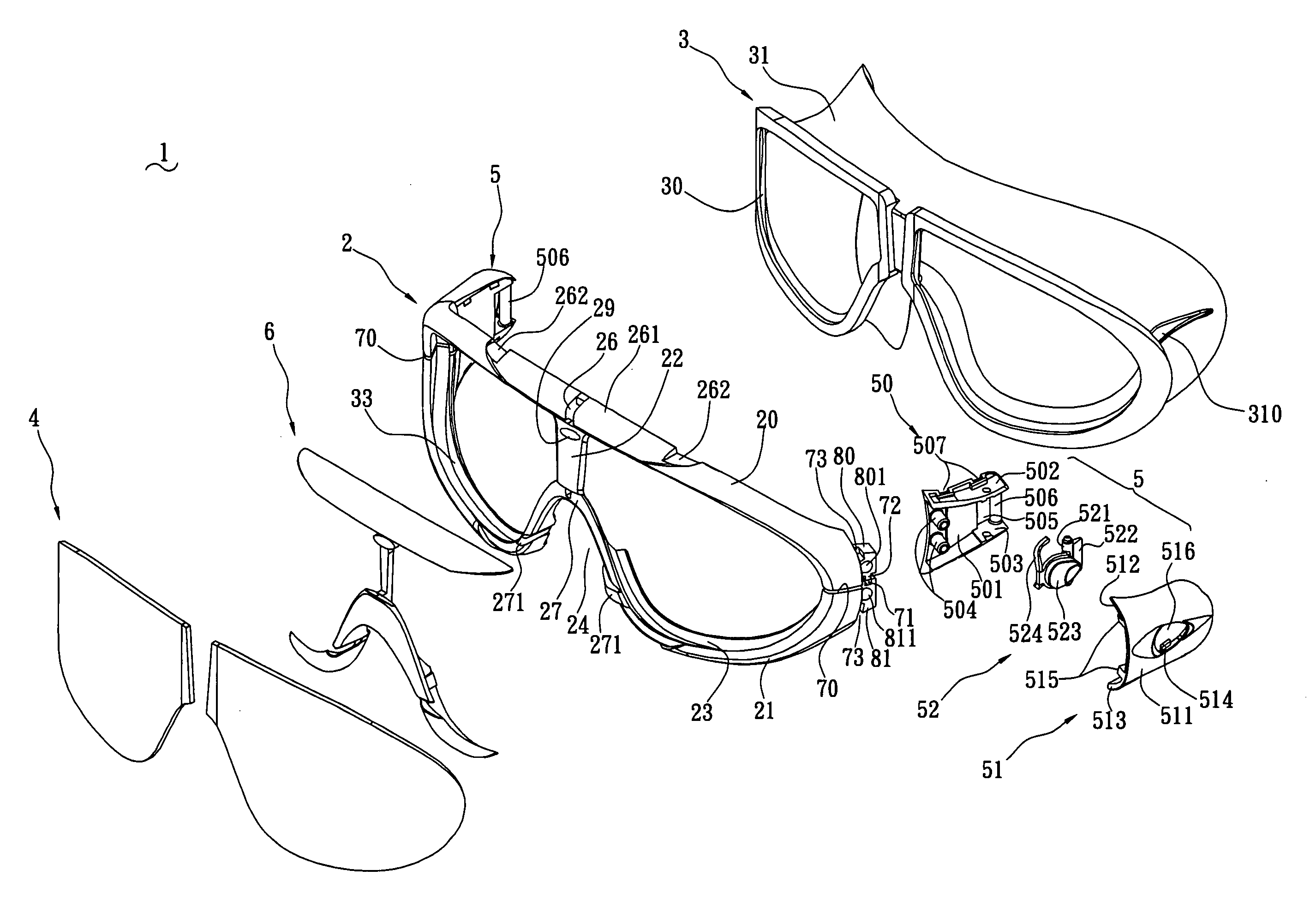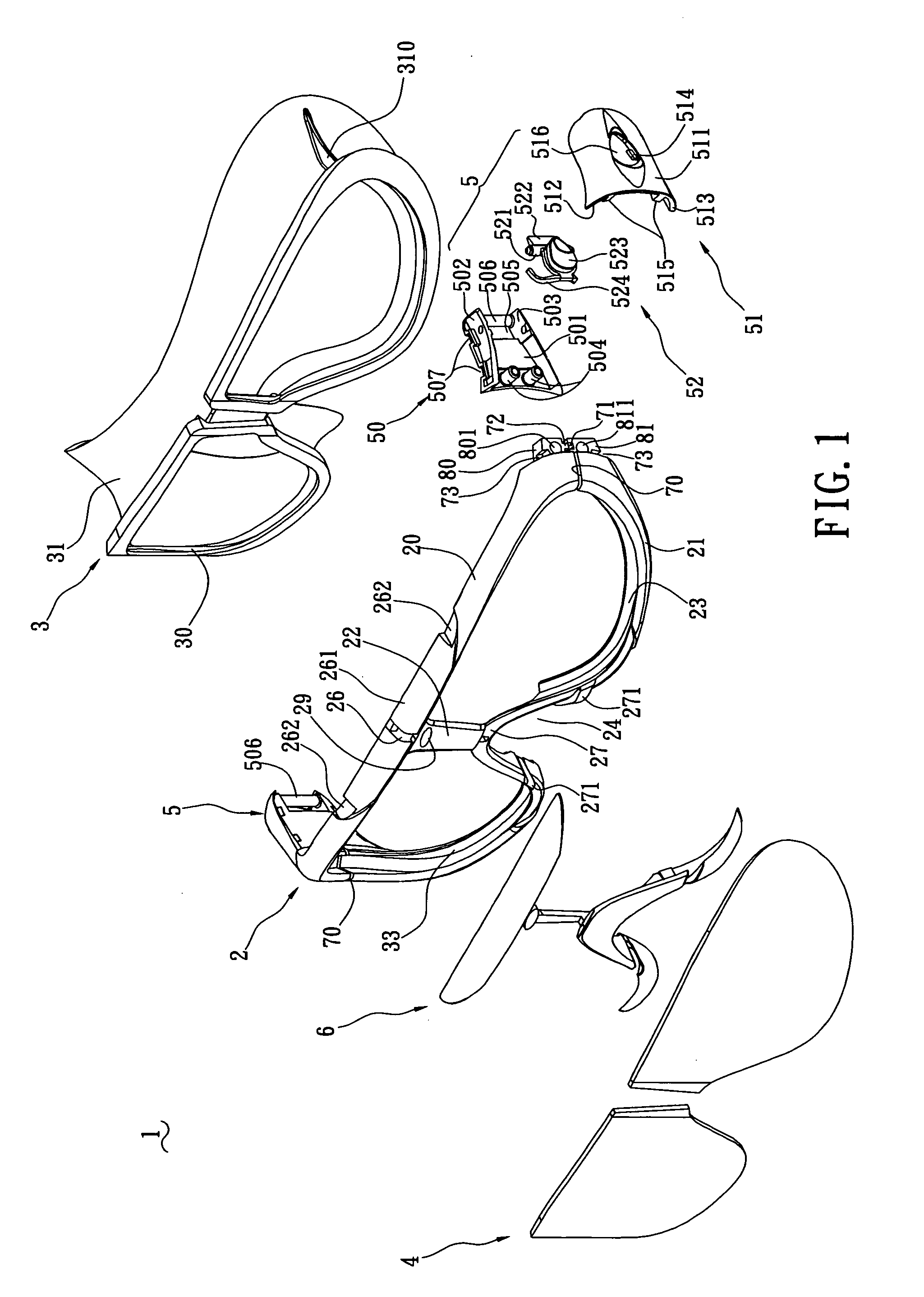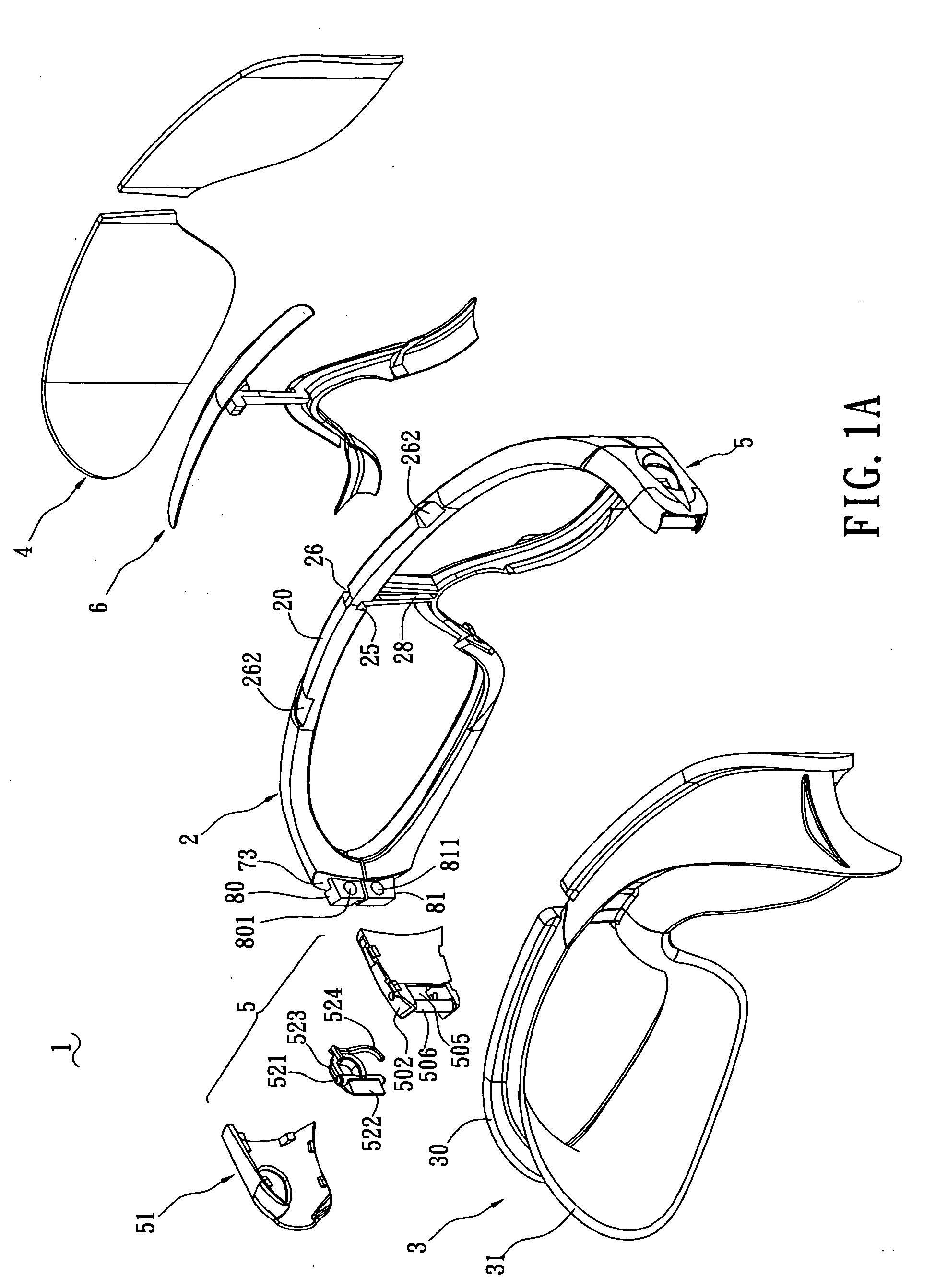Swimming goggles
- Summary
- Abstract
- Description
- Claims
- Application Information
AI Technical Summary
Benefits of technology
Problems solved by technology
Method used
Image
Examples
Embodiment Construction
[0015] With reference to FIG. 1, swimming goggles 1 of the present invention comprise a frame 2, a pad 3, two eyeglasses 4 and compressing devices 5. The frame 2 has an upper frame 20, a lower frame 21 and a nose support 22. The upper frame 20 and the lower frame 21 define closed space for accommodating the eyeglasses 4. Receiving grooves 23 are respectively defined along inner edges of the upper frame 20 and the lower frame 21 for receiving the pad 3. The nose support 22 is arranged on a middle of the upper frame 20, and connects the upper frame 20 and the lower frame 21 thereby dividing the closed space into two slots (not labeled) respectively for accommodating the eyeglasses 4. The lower frame 21 forms a concave portion 24 for straddling a user's nose. The upper frame 20 forms a gap 25 (shown in FIG. 1A) in a middle of an inner edge thereof, and forms an inject hole 26 communicating with the gap 25. Camber portions 261 are slightly concave respectively on both sides of the injec...
PUM
 Login to View More
Login to View More Abstract
Description
Claims
Application Information
 Login to View More
Login to View More - R&D
- Intellectual Property
- Life Sciences
- Materials
- Tech Scout
- Unparalleled Data Quality
- Higher Quality Content
- 60% Fewer Hallucinations
Browse by: Latest US Patents, China's latest patents, Technical Efficacy Thesaurus, Application Domain, Technology Topic, Popular Technical Reports.
© 2025 PatSnap. All rights reserved.Legal|Privacy policy|Modern Slavery Act Transparency Statement|Sitemap|About US| Contact US: help@patsnap.com



